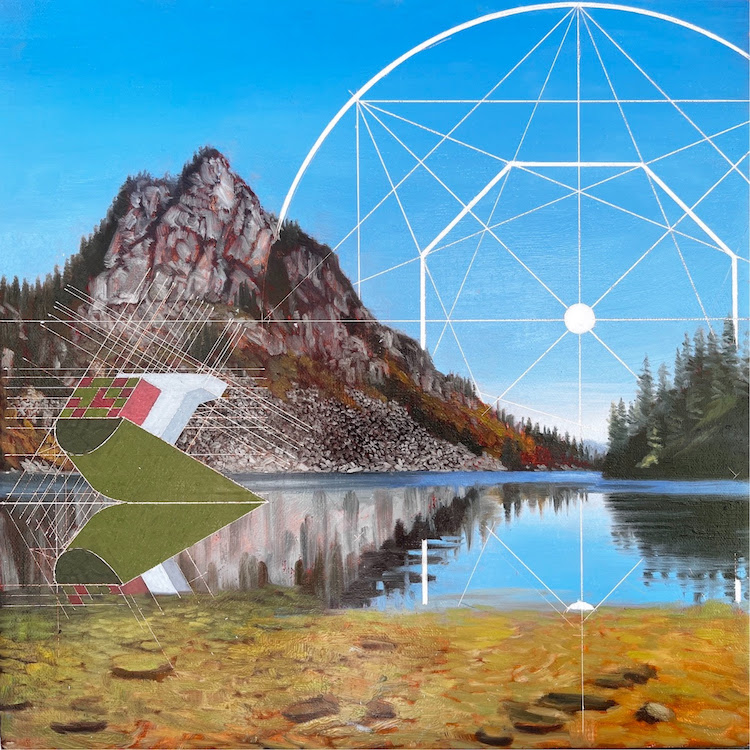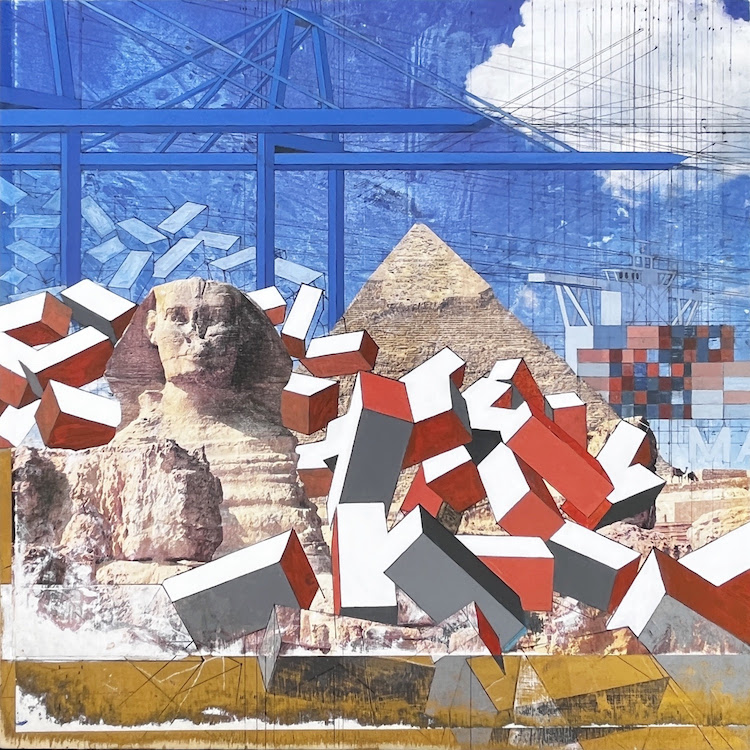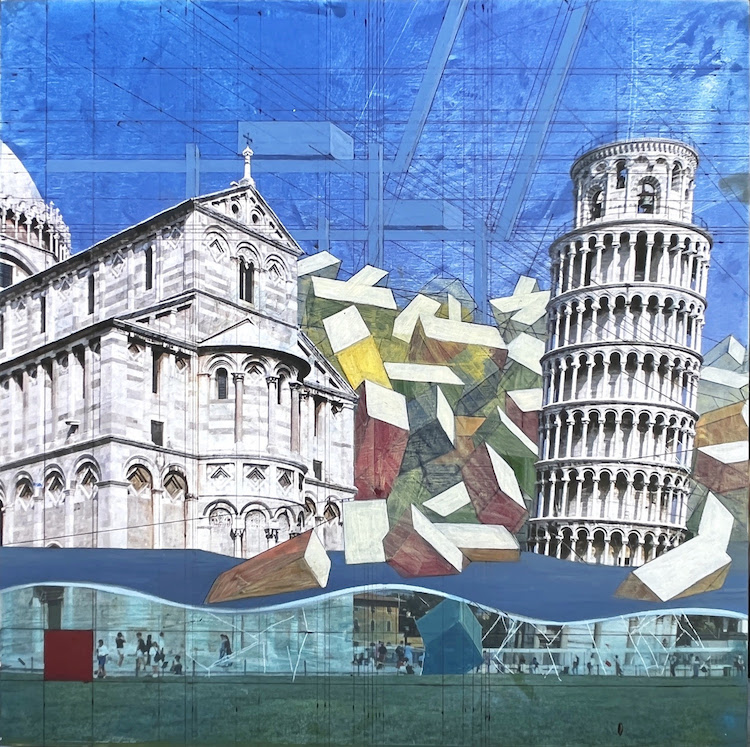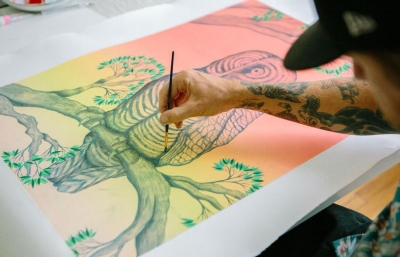Roq La Rue is thrilled to present our first solo show with acclaimed NW artist Mary Iverson. Iverson is known for her paintings that blend traditional landscape painting with graphic line work that references industrial ephemera (most notably shipping containers) and globalizations effects on the world.
The "terrible beauty" aspect of her work is often referenced as being "post apocalyptic" for it's pointed takes on the long term effects caused by out of control capitalism and climate change, and her new works "Calamity at Giza", "Calamity at Pisa", and "Calamity at Stonehenge" certainly back that claim. However, as many artists who's work has been sounding an environmental warning alarm for some time, some of Iverson's recent work has taken a slight turn. New works like "Sun Above Skagit River" and "Lake Valhalla" show a mystical softness and love for the natural world that still exists, and a sense of hope that one day the balance that we have lost will return once again, even if that time is beyond our own lives.
"The painting “Rise and Fall” features the iconic Myrtle Falls at Mount Rainier National Park," Iverson says. "Last summer, my family spread our mom’s ashes at the falls. Watching her life float downstream, I realized that another reality would rise to fill the void. Embracing this dichotomy allowed something positive to spring from the loss, giving me the chance to heal."
Iverson creates her work by painting natural landscapes she sees on her numerous hikes and explorations in the Northwest forests. When that part of the painting is complete, she then scratches perspective lines into the surface using an Xacto knife, then adds shipping containers strewn around the scene. The mandalas in the new series are also scratched into the painting surface. The process of scratching echoes the messages of destruction and creation in the work.
She also works with collage (the Calamity series seen in this show), gluing photographs to a board then painting abstract shapes on the surface of the distressed imagery. These pieces extend her narrative to iconic places that she has visited through media but hasn't yet seen in the real world. They talk about rising sea levels and our contribution to history.
















